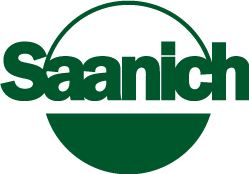What are natural assets?
Natural assets are one of Saanich’s nine asset types and are defined as “natural resources that contribute to the provision of municipal services to the community”.
Natural assets are a part of a broader category known as green infrastructure. Saanich also owns other types of green infrastructure, such as rain gardens and stormwater ponds, that will be included in one of the Asset Management Plans for the eight engineered asset types.
Natural Assets Inventory
On July 8, 2024, Council received the Natural Assets Inventory report, which provides preliminary information about the natural assets within the District of Saanich municipal boundary:
- Report 2024-07-08-NaturalAssetsInventory-Report.pdf
- Presentation 2024-07-08-NaturalAssetsInventory-Presentation.pdf
- Natural Assets Initiative (NAI). (2024). Toward natural asset management in the District of Saanich, British Columbia: Summary of inventory results and recommendations. NaturalAssetsInitiative.ca DistrictOfSaanich-NAM-Inventory-report-NAI.pdf
Saanich acknowledges the grant funding approved for this project in the amount of up to $50,000 through the Union of BC Municipalities under the Canada Community-Building Fund – 2022 Strategic Priorities Fund.
Natural Asset Management
For all our assets, including engineered and natural assets, the goal of asset management is the same – sustainable service delivery. This involves balancing levels of service, risk and costs.
Similar to engineered assets, natural assets enable the provision of municipal services, such as Parks Services and Stormwater Management Services.
Unlike engineered assets, natural assets typically also provide one or more co-benefits that enhance the liveability and resilience of the community, such as air purification, carbon sequestration, temperature regulation and many others.
Together, the municipal services and co-benefits enabled by our natural assets are known as “ecosystem services”. The focus of natural asset management is the sustainable delivery of our municipal services.
Natural asset management planning considers the unique features of natural assets as compared with engineered assets, such as:
- Potential to provide or support multiple municipal services at lower cost
- Potential to provide co-benefits
- Potential to be more resilient and adaptable to climate change
- Lifecycles are typically much longer or indefinite
Lifecycle phases (i.e. acquisition, maintenance, monitoring, and restoration) are typically different from engineered assets (i.e. acquisition, operations, maintenance, replacement/renewal and disposal).
Next Steps
The next step in the Asset Management Strategy is to develop the Natural Asset Management Plan, which will further develop the information in the inventory, and also develop the lifecycle management activities, costs and funding strategies for the natural assets that are owned and managed by the District of Saanich.
The Natural Asset Management Plan will be integrated with other Saanich initiatives, from strategic documents and plans to implementation initiatives.
This project is planned to be completed by 2027.




